Back in 2020, Thrain Shadbolt explained to us about the visual effects work done by Weta FX on The Christmas Chronicles 2. He then worked on Hawkeye and Shazam: Fury of the Gods.
Paul Ramsden began his career in animation in 2006. He joined Weta FX in 2013 and has worked on a number of shows, including The Hobbit: The Battle of the Five Armies, Alita: Battle Angel, Jungle Cruise and Black Adam.
How did you and Weta FX get involved on this show?
[Thrain Shadbolt / TS] Weta FX had collaborated successfully with the client on season one, and they were keen to work with us again. Myself and VFX Producer Tom Greene stepped into the new season fresh, but we were lucky enough to have a number of crew onboard who had worked on season one, including Animation Supervisor Paul Ramsden. That would prove very useful, since it meant there was already an established dialogue with the client around how the creatures acted, as well as institutional knowledge in Weta FX as to how we would proceed technically.
How was the collaboration with the showrunners and VFX Supervisor Erik Henry?
[Paul Ramsden / PR] I actually worked on season one with Erik, Matt and the team so I was pretty familiar with them. They are great to work with, always open to input and ideas from our side.
[TS] It was a real pleasure to work with Erik for the first time, and I found him to be very respectful of the work at hand, and our team. In all it was a great collaboration; Erik and his team always made us feel welcome and like an equal partner in the process.
How did you organize the work with your VFX Producer?
[TS] It was good to work with Tom Greene again after many years. The division of responsibilities felt very natural, and Tom’s skill let me as a Supervisor not worry about the logistics of production, but concentrate instead on the creative and technical challenges – which I greatly appreciate.
How did you split the work amongst the Weta FX offices?
[TS] This show was entirely based out of the Wellington office.
What are the sequences made by Weta FX?
[TS] Episode one – A large scale attack sequence with the ‘Worker Drone’ aliens from season one, and a lot of digital pyro. We also did some work with the alien ‘Shard’ in this episode.
Episode two – More alien ‘Spores’ in London, and a new kind of aggressive Spore growing in jars in a secret government lab.
Episode three – A small number of shots in this episode, using Massive to create a large amount of workers advancing on a group of soldiers in a canyon.
Episode four – Major sequence set in Channel tunnel, featuring a Worker alien, then the reveal of the new Hunter Killers (HK) and the ‘egg’ stage of their life-cycle – along with more digital pyro!
Episode six – Luke and family are stalked through the fog by HKs, where we discover the effect his power has on them. We also see ‘HK vision’, from the alien POV.
Episode seven – Small but challenging sequence with HKs in rain, with interactive water FX.
Episode ten – Large scale sequence attack, sequence with HKs in showdown with military, till Luke and other ‘connected’ children bring them down with their powers.
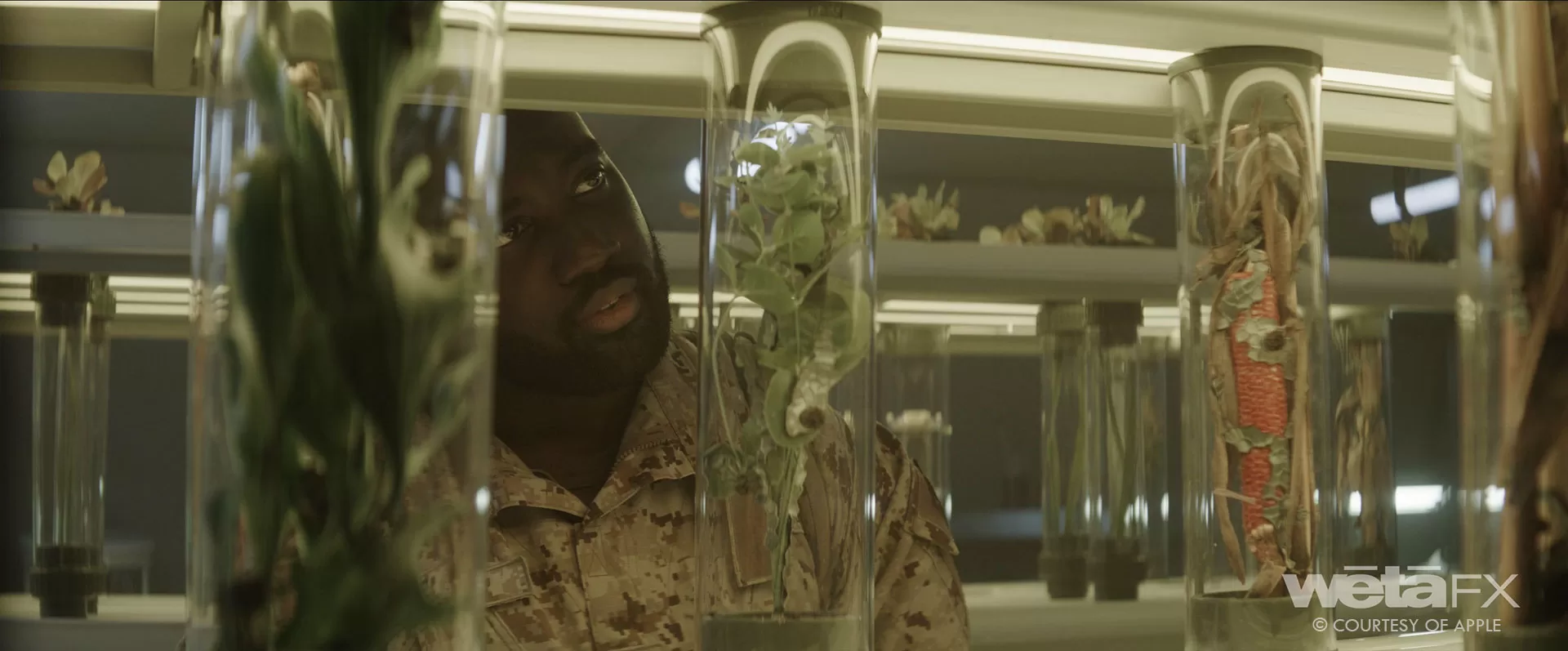
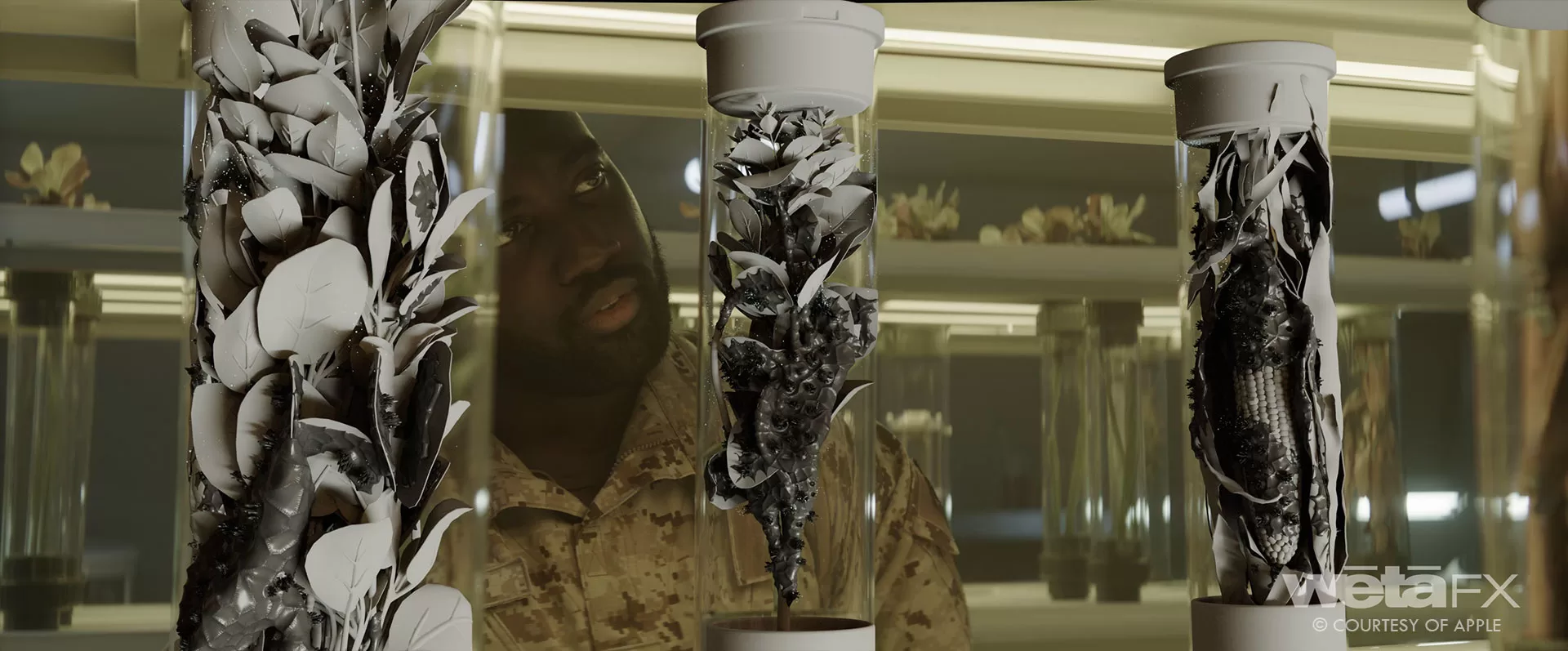
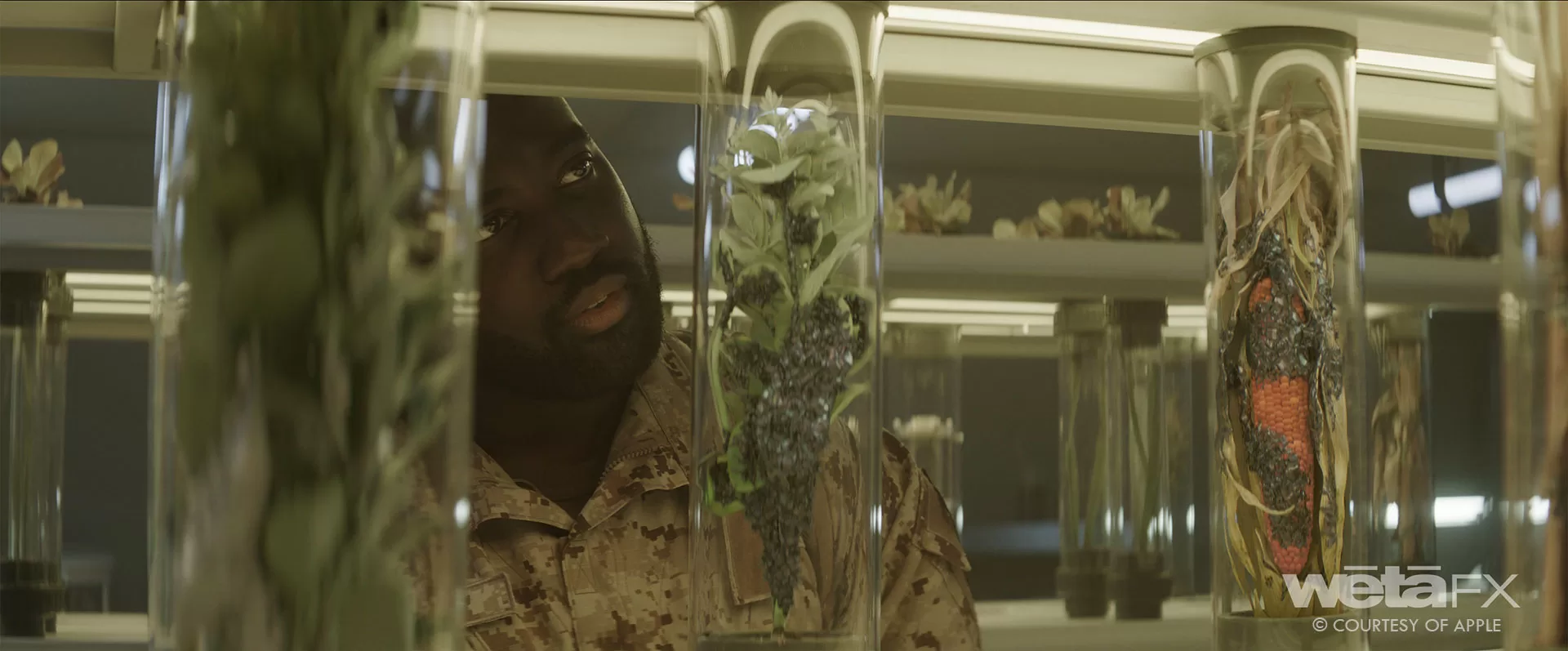
Can you elaborate about the design and creations of the various aliens?
[TS] The Worker alien was inherited from season one, however the Hunter Killer was a whole new design. This was concepted by the Weta FX Art Department, led by Michael Smale, working closely with Erik Henry. When I came on board the design was established, but we then spent some time further developing it as we created the final asset. Areas like the iridescence and blue ‘energy’ glow were areas of enhancement at this stage, as well as the usual work that goes into taking concept images into a functioning, shot ready asset.
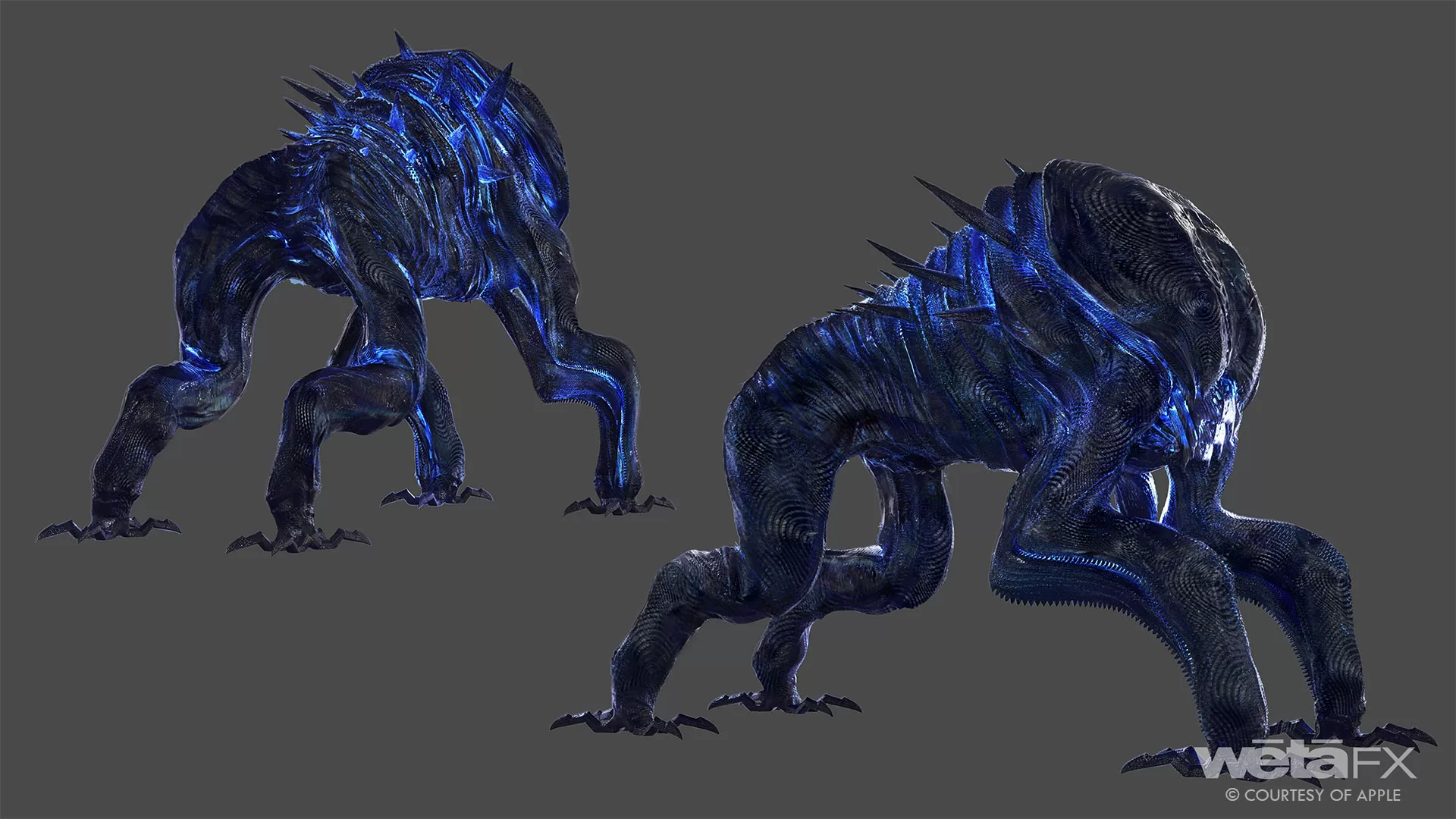
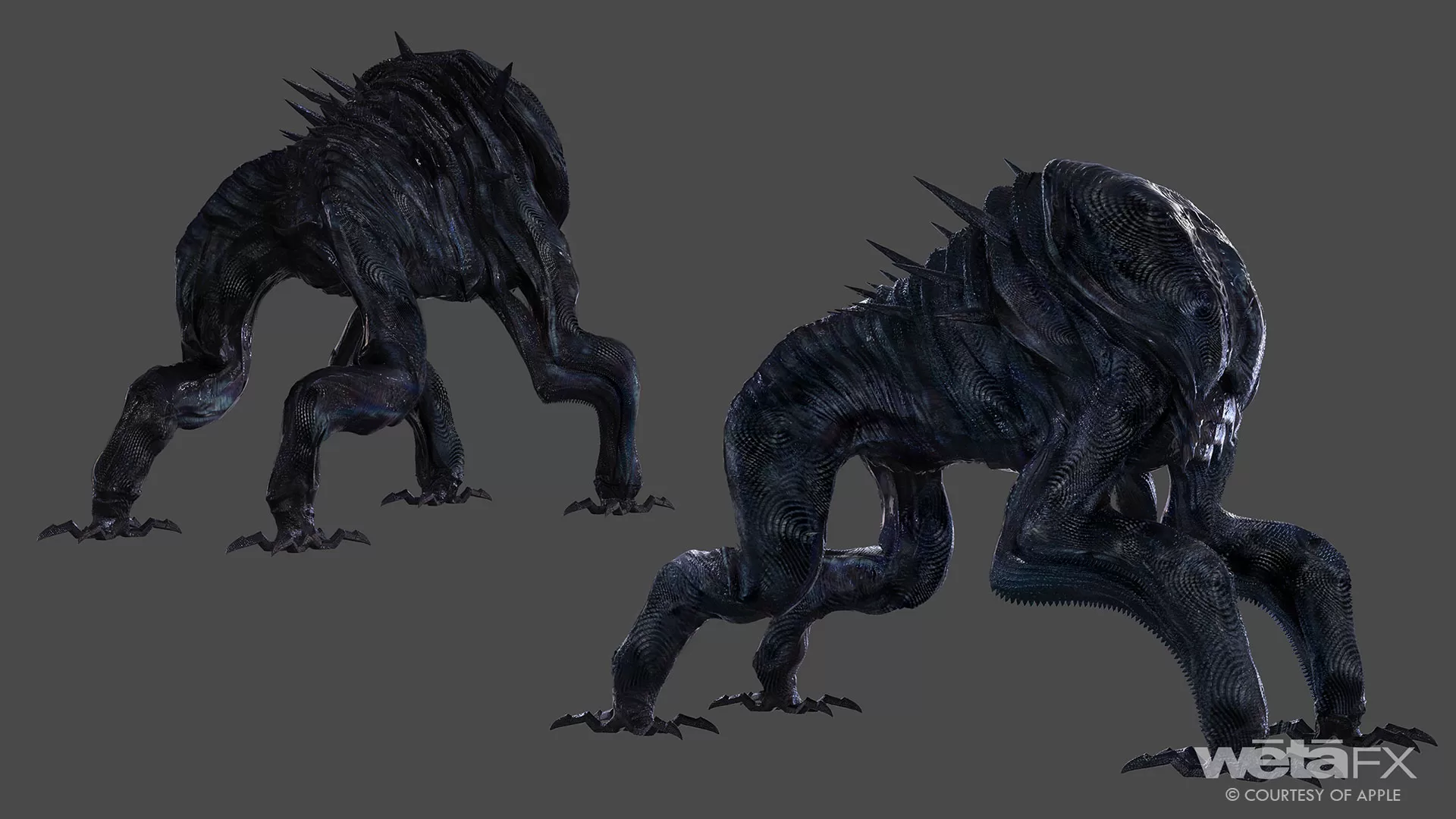
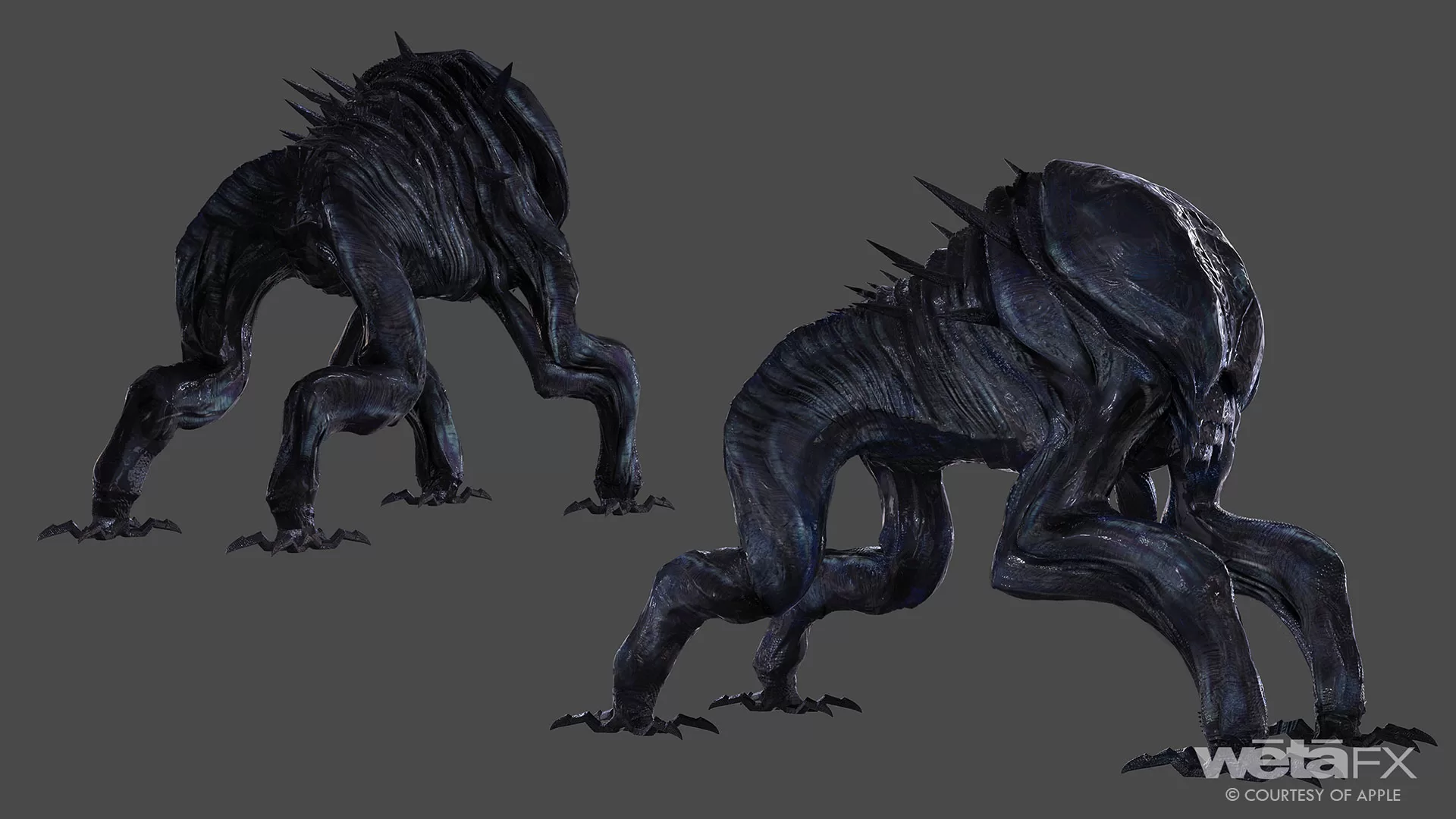
How did you enhance the model for the worker alien?
[TS] We started with a 3D model file from the concept artist’s work. This was then rebuilt into a ‘proper’ asset by the modeling dept, with legitimate topology, UV’s etc. At this point fine detailing was sculpted into the mesh, and refinements made with particular attention to how limbs connected to the body, and how their range of motion would work.
Can you tell us more about the Hunter Killer?
[TS] This was an exciting new challenge for us, taking the concepts developed by Weta’s art department, and fleshing them out into a novel and unique creature. The client wanted to differentiate this from the Worker; it needed to have something of a more conventional topology, so it’s nominally a quadruped, but has a set of menacing ‘blade arms’ that it can bring out when required. They didn’t want the HK to be as dark as the Worker, so we added more color and a subtle iridescence to the surface.
However, we did need to show that it was connected to the Worker (literally, since the Worker can become the egg, which becomes the HK…); to this end the HK also has the ‘ferro-fluid’ style patterns moving on parts of its surface. We were able to re-purpose much of the tech developed for the Worker to accomplish this, and the HK also benefited from the development we had done here in scaling up and making this more efficient for season two.
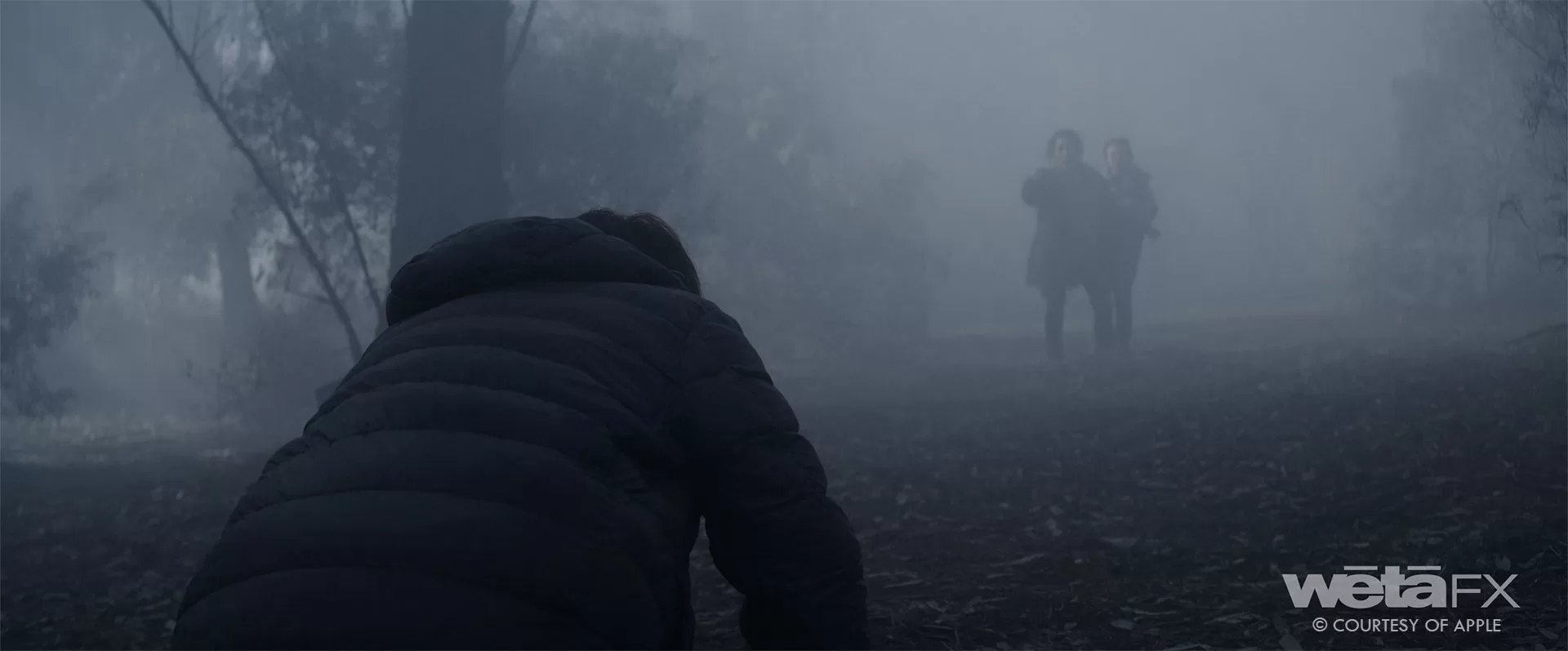
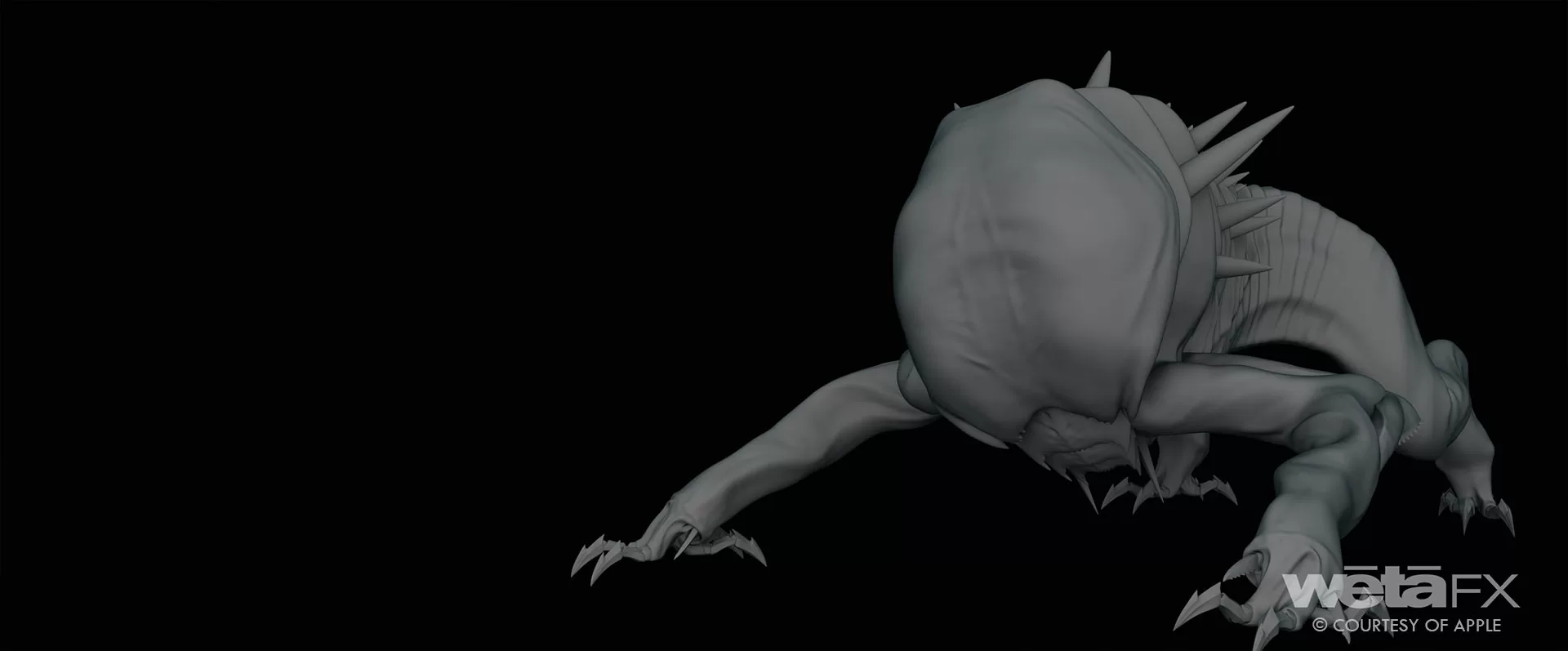
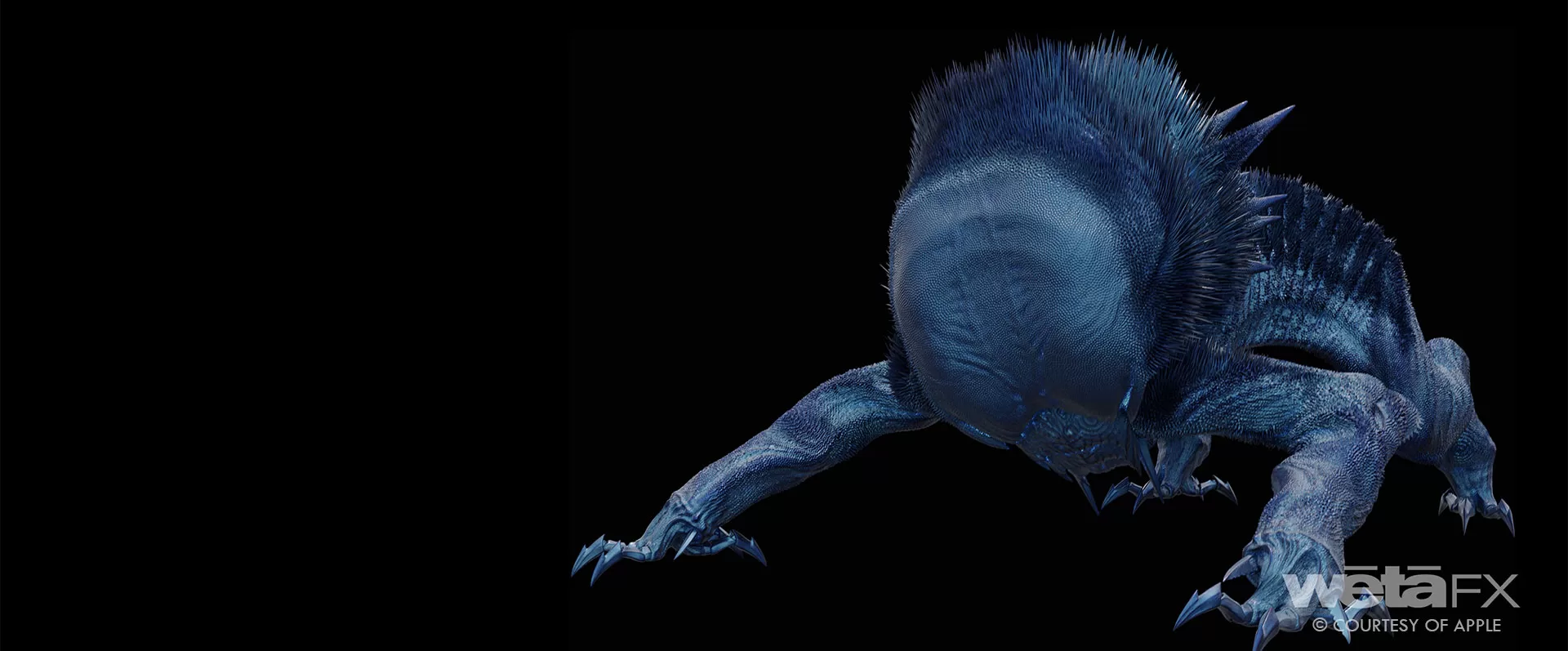
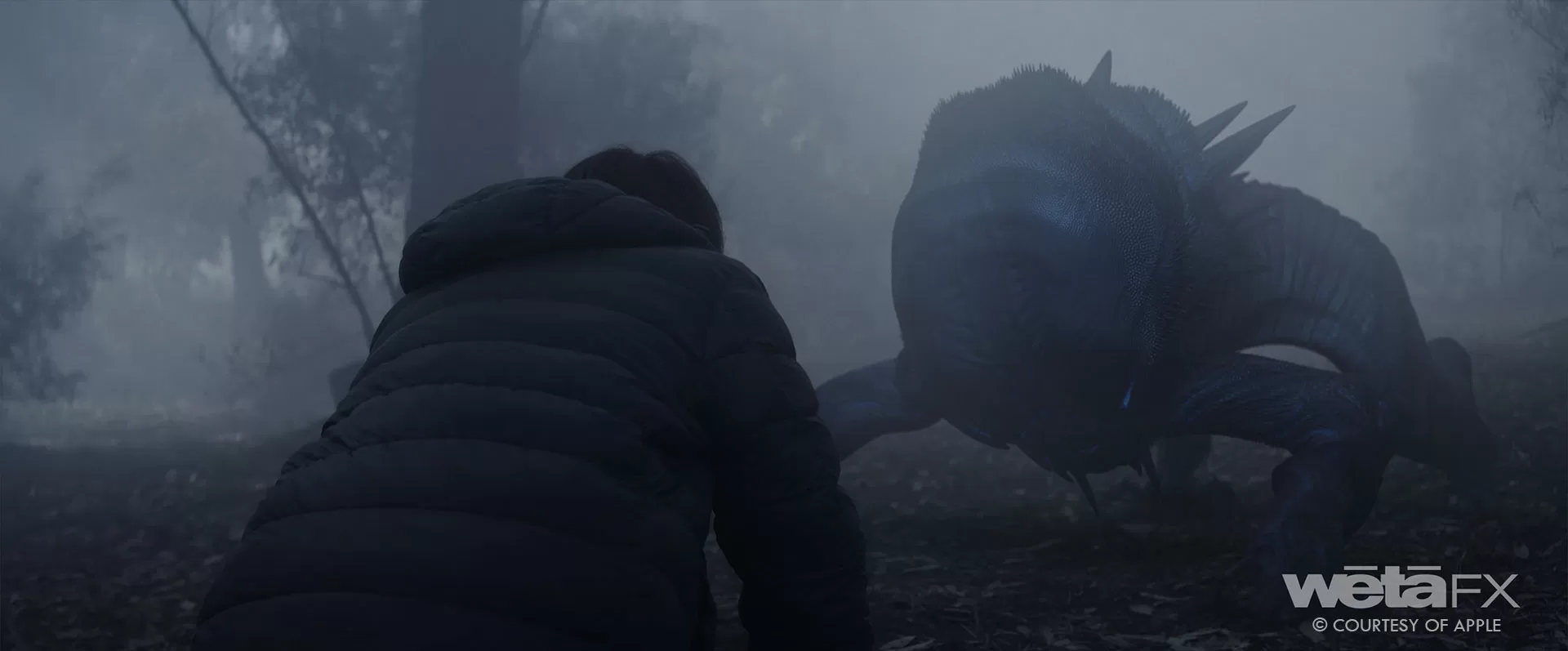
How did you handle their rigging and animation?
[PR] The Hunter Killer puppet (rigging) itself was using our quadruped puppet. The secondary blade arms were rigged to sit in behind and follow the front limbs. We were able to switch spaces when we needed to bring them out when the performance called for it.
The ferro-fluid FX were a big upgrade into our puppet this season. We were able to control the animated textures to a degree to sell the performance of the spikes and ripples in animation. We were then able to publish this information so that FX could use that data to drive their final simulations further down the pipeline.
What kind of references and influences did you receive for their animations?
[PR] To create the animations for our creature, the Hunter Killer, we studied various animals and their movements. We wanted our creature to have the weight and power of bears and big cats, so we observed how they run and stalk their prey. However, since our creature has no face, we also had to rely on our artistic imagination to give it a unique and terrifying appearance through posing and motion.
We also looked at insects and spiders for how our Hunter Killer could traverse up walls and along the tunnel ceilings as we wanted to make use of the blades (secondary front limbs) to cling to the walls. The challenge here was to make them move fast without losing their sense of mass.
What were the main challenges with their animation?
[PR] We faced two big challenges in season two. The first being the sheer number of these things that we see on screen in a single shot/sequence. We developed a few variations of our runs and wall climbs as well as custom animating some hero Hunter Killers.
We also developed ways to work with paths that could be published and rebuilt later on if required. And lastly, we built a variety of vignettes to service specific actions, for example when the Hunter Killers are attacking the gate in episode 4.
The second big challenge was to make the Hunter Killer scary without a face. We achieved this with a combination of posing/motion and the use of the ferro-fluid FX.
How does their dark skin affect your work?
[TS] The HKs were tricky to light, due to their dark shiny carapace that also had an iridescent quality to it, similar to certain insects or reptiles in the animal kingdom. A little like lighting a shiny object like a car, they would sometimes catch problematic highlights.
HDRI capture was always used as the basis of shot lighting, but considerable fine-tuning in Lighting and Comp would be required to get the desired look.
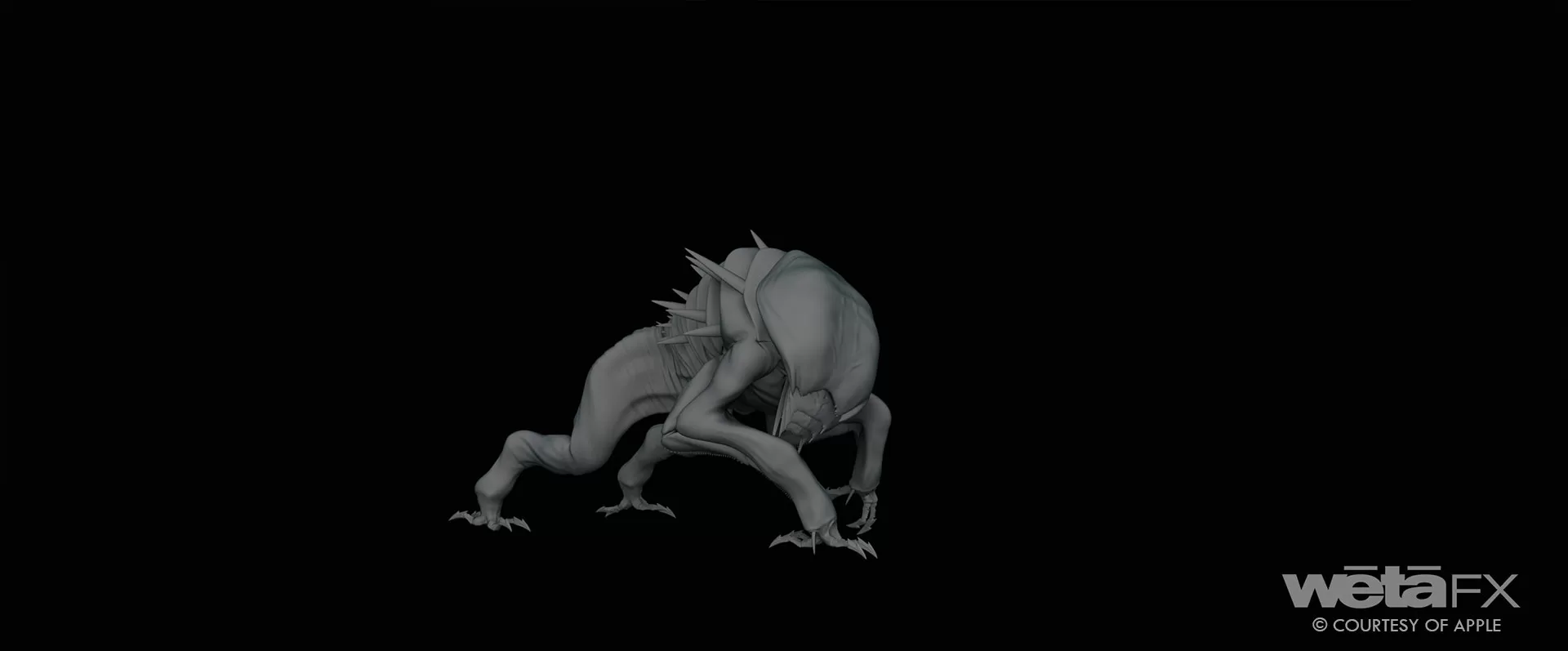
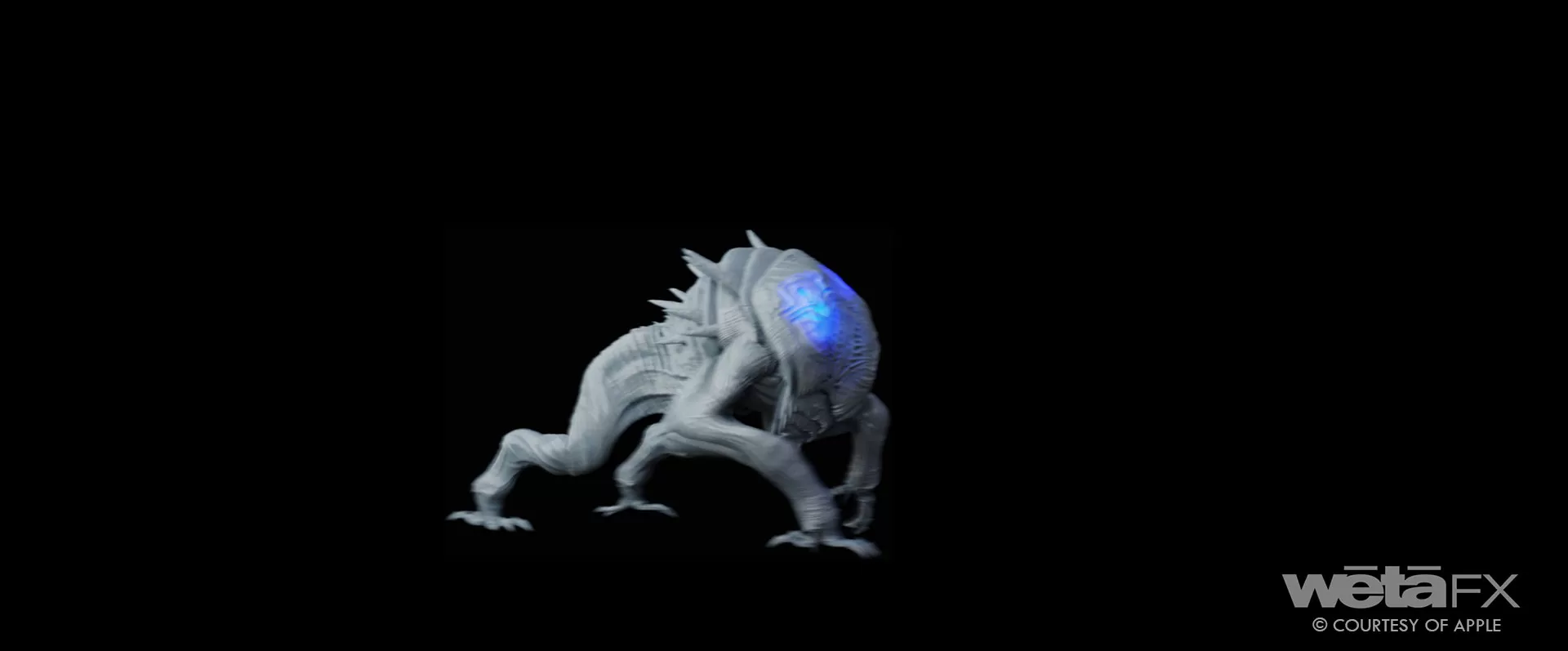
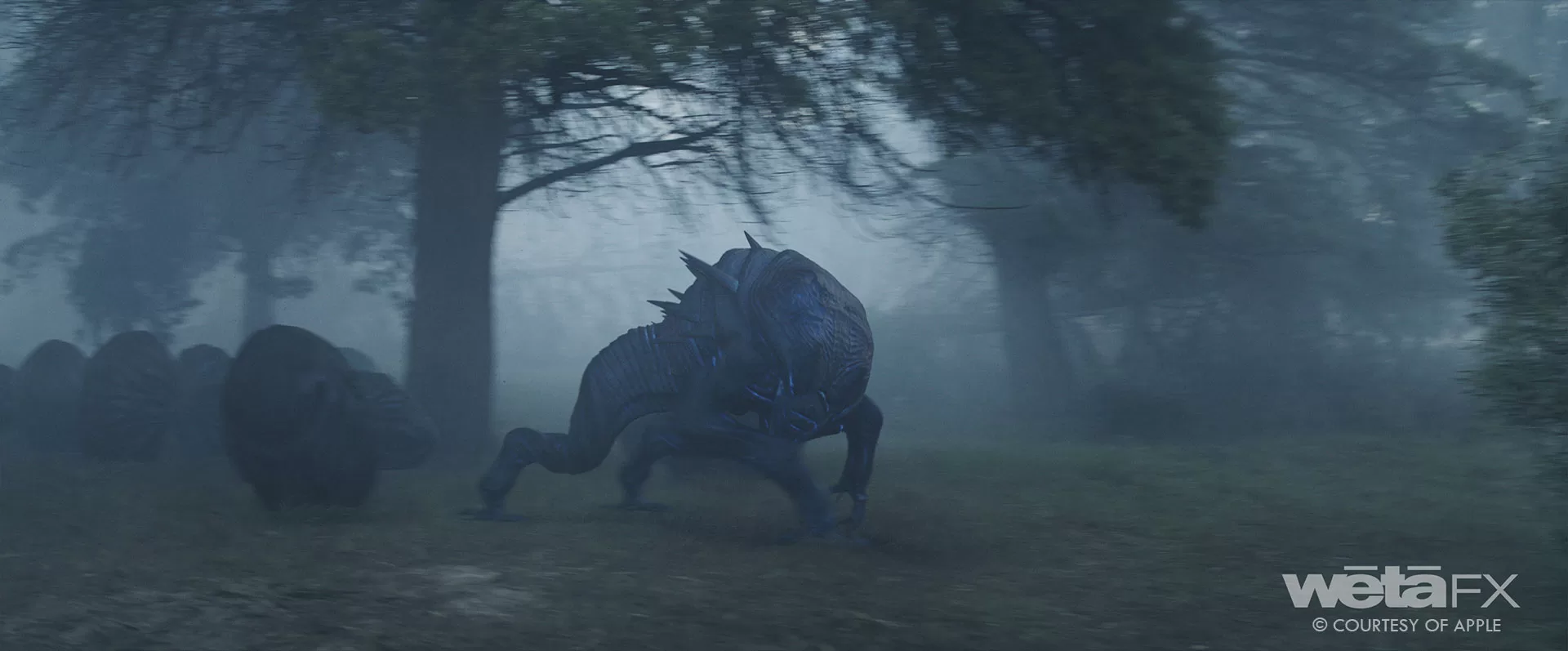
How did you handle the alien crowd shots?
[PR] For both the Worker Alien and the Hunter Killer, we built a variety of vignettes and cycles. This helped us to quickly map out the shot for blocking. We then refined the motion in each shot by hand focusing on the hero action in each shot.
Which alien is your favorite?
[TS] Definitely the Hunter Killer! It was a lot of fun to work with, and we enjoyed figuring out how to portray its various new abilities.
[PR] I like both, But I felt like the Hunter Killer was more action-oriented as the name suggests, so we got to have quite a lot of fun animating that creature.
Which shot or sequence was the most challenging?
[TS] The Chunnel sequence was the most challenging since it was the first sequence to use the new HK asset; we were defining a lot of the creature’s look, abilities, and motion as we completed the shots. It was also a large, complex sequence in its own right.
Was there something specific that gives you some really short nights?
[TS] The Lab sequence in Episode two had some particularly difficult shots where we had to replace on-set assets that were in transparent glass jars with spore-covered CG versions. Integrating the new CG assets into these shots, with multiple layers of reflection and refraction made for some extremely challenging comps. Most of this work will go unnoticed in the final sequence of course!
What is your favorite shot or sequence?
[TS] For me, that would be the Chunnel sequence, where the Hunter Killers are first revealed. A good combination of exciting action and dark menace.
[PR] For me, I really like the beat in episode six where the hunter killer squares off against our protagonists.
What is your best memory on this show?
[TS] When I first saw a test of the Worker Alien puppet running with animated ferro-fluid displacements in our real-time renderer Gazebo. At that point it became clear that we were going to enable a step change in how we visualized these creatures in Animation vs the workflow in season one.
[PR] I think the first time I saw the sequence in episode six where the Hunter Killer corners our protagonists.
How long have you worked on this show?
[TS] We worked on it for a period of at least 9 months, but full production lasted closer to 6 months.
What’s the VFX shot count?
[TS] We completed close to 300 shots for this project.
What was the size of your team?
[TS] The team size changed as production moved through the various asset departments into shots, but we probably reached around 50 crew at peak.
What is your next project?
[TS] I wish I could tell you!
A big thanks for your time.
WANT TO KNOW MORE?
Erik Henry: Here’s my interview of Erik Henry, Production VFX Supervisor.
© Vincent Frei – The Art of VFX – 2023





